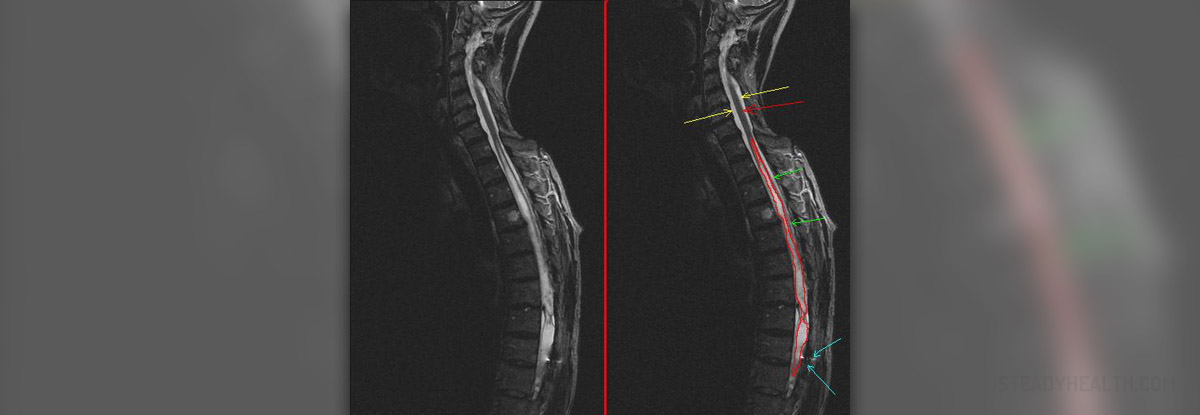
Syringomyelia
Syringomyelia is a medical condition which features with a cyst or cavity within the spinal cord. This cyst is called syrinx. It can grow in time and eventually affect and destroy certain parts of the spinal cord leading to numerous symptoms. In extreme cases one may become paralyzed. The symptoms basically depend on the location of the cyst and its size. Syringomyelia can be congenital or it is acquired.
Pathogenesis of Syringomyelia
The actual cause of syringomyelia is connected to excess of cerebrospinal fluid in the central canal of the spinal cord. This fluid divides the surrounding white matter and this way a cyst or a cavity is formed.
Another process which may lead to syringomyelia is associated with the obstruction of the cerebrospinal fluid pulsation in the subarachnoid space. There are numerous causes of obstruction including Chiari malformation, spinal arachnoiditis, scoliosis, spinal vertebrae misalignment, tumors of the spinal cord, spina bifida, etc.
Symptoms of Syringomyelia
Patients may experience a variety of symptoms. Chronic pain, abnormal sensations or even loss of sensation in certain body parts are only a few. If a syrinx has caused damage of parasympathetic and sympathetic nervous system the patient may complain about abnormal body temperature, loss of control over bowel etc. Additional symptoms include temporary or permanent paresis or even paralysis. If syrinx is located high in the spinal cord or is in the brainstem one may suffer from vocal cord paralysis, ipsilateral waste of the tongue, trigeminal nerve sensory loss and so on. This medical condition typically affects proprioreception.
Diagnosis and Surgical Treatment for Syringomyelia
Syringomyelia can be easily diagnosed by MRI of the spine. Additional test performed in people who are suffering from syringomyelia include EMG, CT and myelogram. EMG gives perfect insight in potential weakness of muscles and CT scan of the brain may visualize tumors or other potential underlying cause of syringomyelia.
Syringomyelia is treated surgically and this is the only effective way to stop further expansion of the cyst and potential complications. Not all the patients suffering from syringomyelia are operated straight away. Only those who suffer from advanced stage of the disease and have numerous symptoms caused by compression of the cyst.
Surgery carries certain risk. During the surgery there is a chance of damage to the spinal cord. The goal of this treatment modality is to take care of the underlying condition and to prevent further growth of the syrinx.
There is a chance that syringomyelia will reoccur which requires repeated surgery.
Certain number of patients may benefit from ventriculoperitoneal shunt. It allows drainage of excessive cerebrospinal fluid into the peritoneal cavity. Ventriculoperitoneal shunt prevents progression of the disease and alleviates the symptoms.












_f_280x120.jpg)

_f_280x120.jpg)

_f_280x120.jpg)
Your thoughts on this
Loading...